World Environment Day: Plastic, innovations and tips for a sustainable lifestyle
7/6/2018
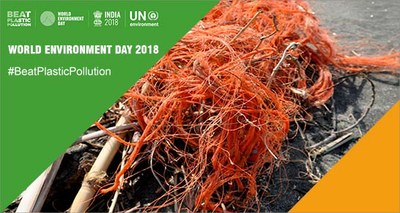 On the occasion of the World Environment Day, dedicated to the fight against plastic pollution (#BeatPlasticPollution), ENEA took stock of research in this sector, inviting to adopt individual and collective behaviors inspired to an eco-sustainable lifestyle. Since the discovery of isotactic polypropylene by Italian chemist Giulio Natta, which earned him the Nobel Prize for chemistry in 1963 together with his German colleague Karl Ziegler, the polymeric materials derived from petroleum, which we commonly call plastics, have made up most of the objects we use every day, since its low cost, high functionality and extreme resistance make plastic suitable to a multitude of uses, from disposable containers to heart valves.
On the occasion of the World Environment Day, dedicated to the fight against plastic pollution (#BeatPlasticPollution), ENEA took stock of research in this sector, inviting to adopt individual and collective behaviors inspired to an eco-sustainable lifestyle. Since the discovery of isotactic polypropylene by Italian chemist Giulio Natta, which earned him the Nobel Prize for chemistry in 1963 together with his German colleague Karl Ziegler, the polymeric materials derived from petroleum, which we commonly call plastics, have made up most of the objects we use every day, since its low cost, high functionality and extreme resistance make plastic suitable to a multitude of uses, from disposable containers to heart valves.
But in a few years its great diffusion has also turned into an environmental emergency. In fact, a recent study by ENEA found that plastic objects and fragments account for over 80% of waste collected on the coasts and in the waters of the Mediterranean. In the last ten years plastic production has been higher than that of the entire 20th century and, according to the United Nations Environment Program (UNEP), if the current trend is not reversed, in 2050 in the sea there will be more plastic than fish.
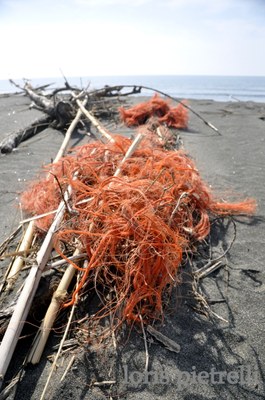 "For a long time ENEA has been studying and developing new technologies and processes for the recovery and recycling of raw materials from waste; since 2015 it has also been involved in monitoring and characterizing plastics in the seas, lakes, rivers and beaches, and it is also committed to analyzing the fragile balance of ecosystems ", Roberto Morabito, Head of the ENEA Department for Sustainability of Production and Territorial Systems pointed out. "Starting from these activities and the long-term experience of our researchers, we want to encourage behaviors more compatible with the environment, reducing plastic consumption and avoiding overuse and misuse, without penalizing the material itself" , Morabito continued.
"For a long time ENEA has been studying and developing new technologies and processes for the recovery and recycling of raw materials from waste; since 2015 it has also been involved in monitoring and characterizing plastics in the seas, lakes, rivers and beaches, and it is also committed to analyzing the fragile balance of ecosystems ", Roberto Morabito, Head of the ENEA Department for Sustainability of Production and Territorial Systems pointed out. "Starting from these activities and the long-term experience of our researchers, we want to encourage behaviors more compatible with the environment, reducing plastic consumption and avoiding overuse and misuse, without penalizing the material itself" , Morabito continued.
"Polymeric materials are light and resistant materials, suitable to a multitude of uses and which we can’t do without. Furthermore, these are materials that "belong" to the Earth, coming from the millennial sediments which generated oil ", Loris Pietrelli of the ENEA Division Protection and Valorisation of the Territory and Natural Heritage, explained.
"The actual paradigm shift is avoiding an unnecessary use of plastics with the purpose of increasing awareness of our daily actions, such as the purchase of disposable products and their disposal. But, as researchers, we also have the goal of turning plastic waste into a resource for producing other objects or energy, applying the principles of a circular economy ", Pietrelli concluded.
The daily actions suggested by ENEA can be summarized in the motto: Choose, Use, Reduce, Eliminate. Follow the 'CURE' advice yourself!
CHOOSE
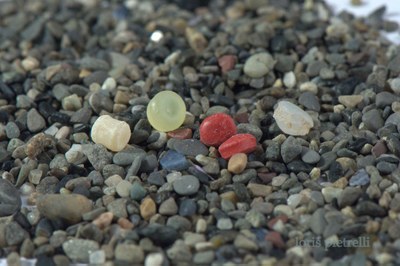 Knowing how plastic objects are disposed of or dispersed in the environment allows us to choose them in a more conscious way. We should reduce our ecological footprint, favoring the use of objects made of materials that will not survive, especially for single-use products.
Knowing how plastic objects are disposed of or dispersed in the environment allows us to choose them in a more conscious way. We should reduce our ecological footprint, favoring the use of objects made of materials that will not survive, especially for single-use products.
Fabrics made of natural fibers
Recent studies have shown that for each washing machine you can download up to 700 thousand microfibres, most of synthetic origin which, due to their small size are not retained by the sewage treatment plants and spread in the environment. Fabrics made from natural fibers release lower amounts of microfibers and being breathable they are more suitable for our body.
Compostable coffee capsules
Ten billion coffee capsules are sold worldwide, and Italy alone produces approximately 120 thousand tons of waste per year. All this just to put 5 grams of coffee powder in an individual disposable capsule! Better to choose biodegradable pods or use a moka pot or other coffee makers.
Tap water
For every liter of bottled water at least 5 liters of process water and 35 g of plastic, equal to 100 cm3 of oil, are consumed, producing 80 grams of CO2. On average, to transport a plastic bottle, about 20 cm3 of oil- with the emission of 48 grams ofCO2- are consumed. Every year in Italy 270 liters of mineral water are consumed per capita, equivalent to 180 1.5 liter bottles, with an environmental impact equal to 22 liters of oil, 108 liters of water and 23 kg of CO2.
Products with reduced packaging, biodegradable or compostable, products on tap and refills
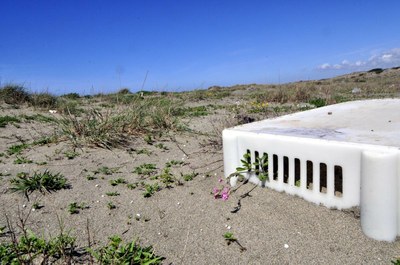 According to ENEA studies, over 17% of the packaging fraction found on Italian beaches is made up of material used to wrap food. Packaging aesthetics often takes the lead over functionality, up to the point where what is already "protected" in nature (such as coconut or cantaloupe) gets packaged. Among the various typesof packaging, multi-material packaging is hard to recycle, while among the most used packaging expanded polystyrene (PSE), due to its low density, is not always recycled. To this aim, ENEA is developing a solubilization process that allows the recovery of the virgin polymer.
According to ENEA studies, over 17% of the packaging fraction found on Italian beaches is made up of material used to wrap food. Packaging aesthetics often takes the lead over functionality, up to the point where what is already "protected" in nature (such as coconut or cantaloupe) gets packaged. Among the various typesof packaging, multi-material packaging is hard to recycle, while among the most used packaging expanded polystyrene (PSE), due to its low density, is not always recycled. To this aim, ENEA is developing a solubilization process that allows the recovery of the virgin polymer.
Separate waste collection
According to recent studies, in 2017 separate waste collection recorded a positive trend with 52.5% (+ 5% as compared to 2015), but we are still lagging behind the 65% target set for 2012. Separate waste collection promotes recycling of plastics, environmental impact reduction and economic sustainability.
USE
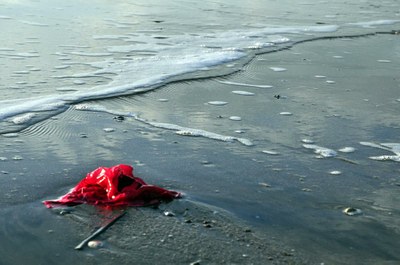 The plastic objects we use daily will live with us and after us for a relaatively long period. In the meantime, if not properly disposed of, they degrade and interact with polluting molecules spread in the environment that can be conveyed in the various food chains up to our plates.
The plastic objects we use daily will live with us and after us for a relaatively long period. In the meantime, if not properly disposed of, they degrade and interact with polluting molecules spread in the environment that can be conveyed in the various food chains up to our plates.
Long-lasting containers, reusable or biodegradable crockery
The polymers most commonly used to make containers (polypropylene, polyethylene, polystyrene) remain in the environment for up to hundreds of years. If long-lasting objects such as glass cannot be used, it is preferable to use objects made of biodegradable or compostable material such as biopolymers (eg those derived from sugars).
Reusable, biodegradable or compostable shopper bags
The estimated annual global consumption of polyethylene bags is of 500 billions. ENEA studies have shown that most of the plastic fragments found at sea, in lakes and on beaches derive from the degradation of polyethylene bags whose fragments (<2.5 cm) represent 22% of the plastic waste that invades our beaches. Most of them are used only once and then thrown away.
Symbols on plastic items
Pay attention to the materials used for packaging: you can learn to recognize the different polymeric materials through the symbols provided for by Directive 94/62 / EC (Article 219 paragraph 5) which invites manufacturers to indicate the characteristics of the materials used. On plastic packages, the Moebius strip ( three arrows looping back on themselves forming a triangle) signifies recycling, while the numbers inside it (from 1 to 7) indicate the polymer used, according to a pre-established code which can also be accompanied by acronyms. This can help dispose of plastic at the end of its life.
REDUCE
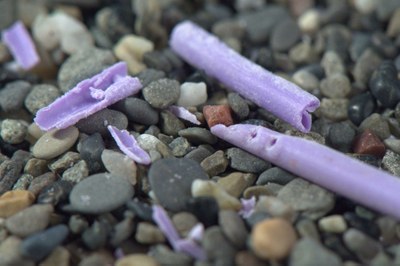 When shopping buy only what you need, promoting a more environmentally-friendly lifestyle.
When shopping buy only what you need, promoting a more environmentally-friendly lifestyle.
Use of plastic bottles
Plastic bottles were found in 92% of the Italian beaches monitored (ENEA study). 17 million barrels of oil are needed to produce the water bottles used in one year in the United States (while 20% of the world's population does not have access to drinking water). Carry a reusable water bottle to always have water with you.
Purchase of freshly packaged food products (fruit and vegetables, bread, cheese)
ENEA studies show that 74% of the plastic found in the waters of the main Italian lakes is made up of fragments often attributable to packaging, of which 20% is PSE
Use of disposable lighters
ENEA studies indicate that lighters are present in 42% of the Italian beaches monitored. They are hard to recycle because they are made up of a combination of materials that will live for a long time. It is preferable to use refillable ones.
ELIMINATE
97% of the planet's water is found in the oceans that, in addition to regulating life on Earth, are a CO2 tank, determine the climate, contain most of the species on the planet. Yet over 8 million tons of plastic end up in the sea every year, transported by rivers. Garbage doesn’t exixt in nature and it’s a creation of the human species.
Non-biodegradable cotton buds
Cotton buds thrown into the toilet pass through most of the sewage treatment works and, through the rivers, reach the sea. A recent ENEA research shows that all Italian beaches are covered with these colored sticks which degrade forming microplastics accounting for 46% of the "objects" found. 100 million buds have been estimated along the Italian beaches. If we were to put them in line, they would reach the Earth’s core. From 1 January 2019, Italy will ban the marketing of non-biodegradable cotton buds.
Plastic drinking straws
Our studies show that straws account for 1.1% of the plastic waste found on the Italian coasts and were present in 75% of the beaches monitored. Used for a few minutes, often coming in a package, they stick around for decades, contributing to the production of microplastics
Disposable products
The drop of oil needed to make a plastic cup, used for just a few minutes, takes 70 million years to form. We manufacture objects which are used for a few minutes with materials that last forever. The EU has proposed new rules banning the marketing of certain plastic products: where there are easily available and affordable alternatives, single-use items will be excluded from the market. In addition to straws and cotton buds, the ban will apply to cutlery, plates, beverage mixers and balloon rods, which will have to be manufactured exclusively from sustainable materials.
Use of cosmetics with microplastics (scrubs, creams and toothpastes)
According to recent European studies, more than 4 thousand tons of microspheres (microbeads) are used each year, equal to 17.5 mg per capita every day, which are not kept by the purifiers and are totally released into the sea. Over 90% is made of polyethylene. Recently, a legislation has passed banning its use as of 2020.
Use of disposable razors
They are hard to recycle because they are assembled with different materials. In a year, shaving every day we produce 1.65 kg of waste if using disposable razors while, the amount of waste is 12 times lower (0.14 kg) when using rechargeable razors.
For more information please contact:
Loris Pietrelli, ENEA - Division “Protection and Valorisation of the Territory and Natural Heritage”, loris.pietrelli@enea.it
